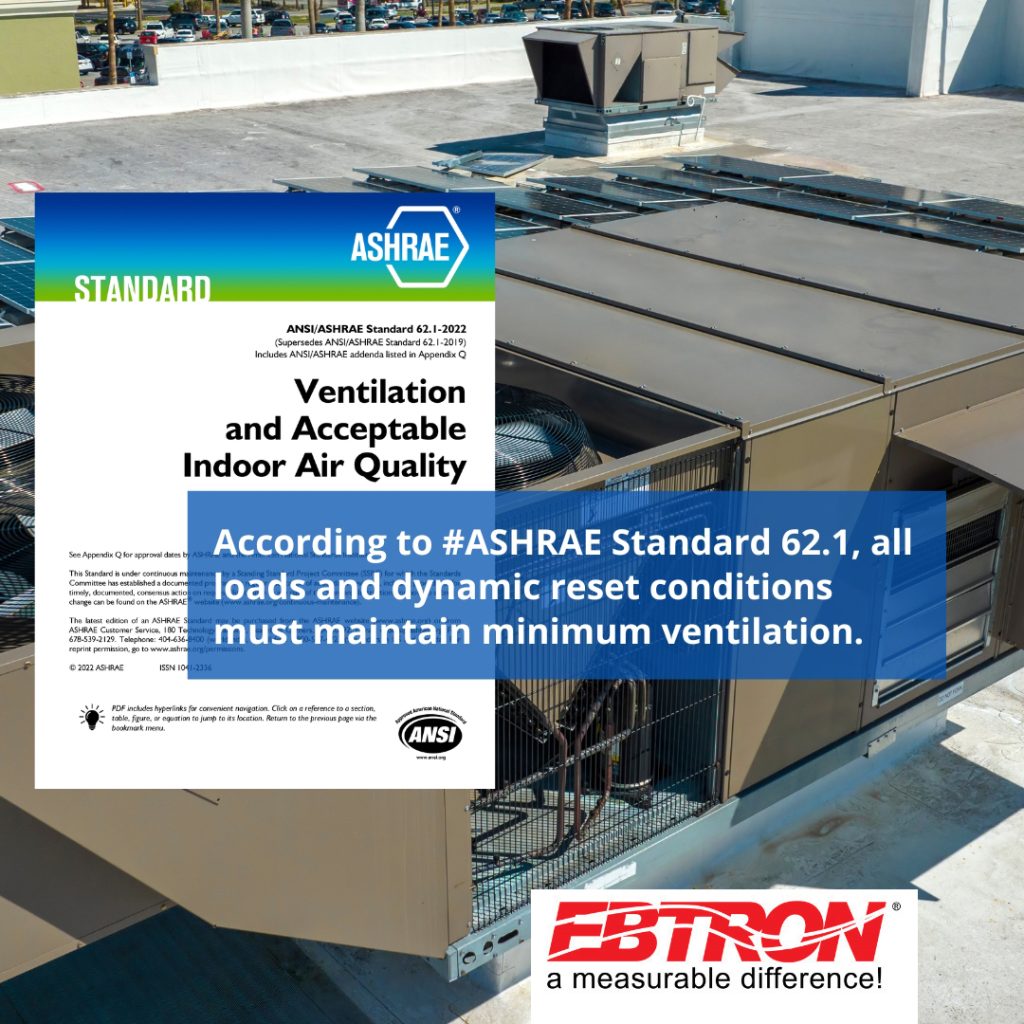1. Maintain minimum ventilation rates in spaces with low occupant densities. ASHRAE standard 62.1 specifies minimum ventilation rates for acceptable indoor air quality (IAQ). Design ventilation rates do not vary significantly with minor changes in population on low occupant density spaces. As a result, fixed minimum ventilation rates should be maintained. External factors such as wind and stack effect will significantly impact uncontrolled outside air intake rates. System effects, including VAV mixed air plenum pressure variations and damper binding, will also influence rates.
Minimum ventilation rates can only be assured with continuous measurement and control. LEED directly rewards designs that monitor and control minimum ventilation rates in low-occupant-density areas. Outside air ventilation rates also significantly influence productivity, health, and liability.

2. Maintain minimum ventilation rates between minimum and maximum levels in spaces with high occupancy densities.
High occupancy density spaces typically have wide variations in population. Changes to ASHRAE Standard 62 result in ventilation rates that vary per person with population changes. As a result, minimum ventilation rates will vary between minimum occupancy, base level, and design occupancy maximum level. The outside air setpoint can be reset between the minimum and maximum levels to save energy by combining supply airflow rates with zone occupancy levels (through direct measurement or scheduling) or by monitoring CO2 levels. Note: CO2 reset cannot assure compliance with Standard 62.1 and may result in over-ventilation during periods of high occupancy and under-ventilation during periods of low occupancy).
3. Provide stable, compartmentalized NET pressure control.
Proper net pressure (independent of wind infiltration/exfiltration) is paramount for acceptable indoor air quality and applications requiring the control of contaminants (i.e., hospitals, laboratories, clean rooms, etc.). Regarding IAQ, improper pressurization will result in significant water and dirt/dust transport across the building envelope, a prerequisite to mold and fungal growth. Compartmentalized, independent control is essential for proper pressurization and can only be accomplished by maintaining airflow rate differentials. Methods that rely on static pressure measurement cannot ensure compartmentalized NET pressurization and often cannot ensure moisture control in or near the building envelope.
4. Reduce energy
Airflow measurement allows for robust, sequential damper/fan sequencing strategies that reduce pressure drop and result in up to 25% fan energy savings. Airflow control significantly improves the stability of airside economizer temperature control. Accurate measurement of minimum ventilation rates results in only conditioning specified outside air rates.
5. Provide a sustainable design when quality airflow measurement devices are specified.
Quality airflow measurement devices, such as those manufactured by EBTRON, result in years of trouble-free operation. Direct sensing of airflow rates continuously monitors and verifies system performance and validates the proper function of critical components such as fans, dampers, and motors.

© 2023, EBTRON, Inc.
